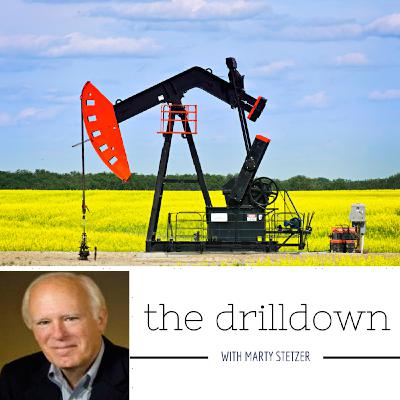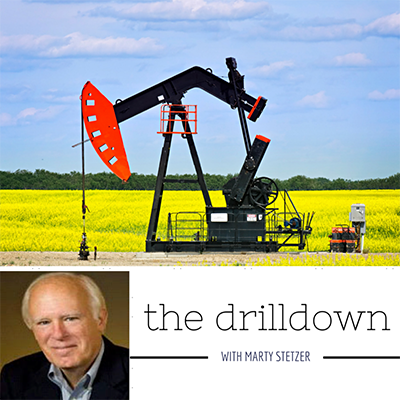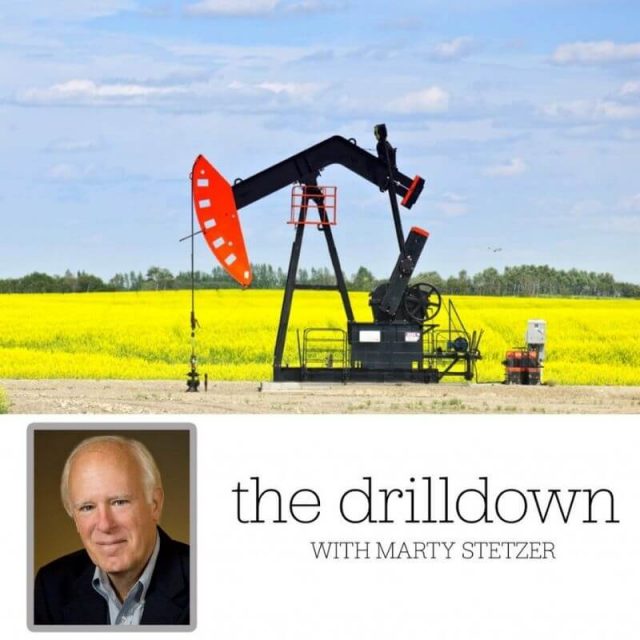The Drill Down Oil and Gas Podcast: Offshore Drilling and Deepwater Drilling
Description
 In this episode of The Drill Down, Marty Stetzer sits down with EKT Interactive Associate Terry Gardner to discuss current topics and trends in the deepwater drilling segment of upstream oil and gas.
In this episode of The Drill Down, Marty Stetzer sits down with EKT Interactive Associate Terry Gardner to discuss current topics and trends in the deepwater drilling segment of upstream oil and gas.
Learn more about Offshore & Deepwater Drilling
This particular podcast episode will be of interest to those folks in the oil and gas industry that are planning on attending this years Offshore Technology Conference (OTC 2016).
Of course, if you need to brush up on your understanding of the these upstream topics, be sure to check out Oil 101, our free 10-part introduction to the oil and gas industry.
It is available to everyone at www.ektinteractive.com.
Listen to The Drill Down with Marty Stetzer below:
Links
Oil 101 – A FREE Introduction to Oil and Gas
What is the difference between Upstream and Downstream?
Houston Museum of Natural Science: Weiss Energy Hall
SPE – Journal of Petroleum Technology
EKT Interactive Oil and Gas Podcast Network
Transcript
Marty Stetzer:
Hi, everyone, and welcome to the Drill Down with Marty Stetzer. This podcast is part of our EKTI Oil and Gas Learning Network, and brought to you by Oil 101, our free introduction to oil and gas. Today I’ll be speaking with Terry Gardner, a longtime friend and industry veteran. This is our first podcast on offshore and deepwater, and we’re really happy to have Terry help us focus on this important part of the business. Terry, welcome.
Terry Gardner:
Thanks, Marty. Nice to be here.
Marty Stetzer:
Terry, can you first start by giving our listeners your background?
Terry Gardner:
Well, I’m basically a mechanical engineer with some graduate work in engineering mechanics, and a 12-year or so stint in the aerospace industry before it went kerplunk, and I switched to offshore. I went to work for Exxon about 40 years ago. From then on I’ve been working in offshore oil and gas.
Marty Stetzer:
You’ve also done some consulting work besides working with Exxon, Terry, correct?
Terry Gardner:
That’s right. I retired from Exxon, consulted with BP for about five years, and since then I’ve been mostly teaching.
Marty Stetzer:
Terry, thanks for being part of EKTI. We originally met through our Houston Museum of Natural Science relationship in January of 2011. Can you tell our listeners who are interested in the industry what they can get from a visit to HMNS?
Terry Gardner:
The Energy Hall at the Houston Museum of Natural Science is really a great place to get introduced to the oil and gas industry. It has screens that you can touch and interact with, all kinds of information, and it spans the range all the way from geology and geophysics, exploration, all the way through production and even a little bit of offshore and some refining, so some of the downstream.
Marty Stetzer:
I think you told me at one time they were thinking of a possible upgrade to HMNS. Can you give us kind of the update on what’s going on there?
Terry Gardner:
They’re already committed to that, and in fact, in a couple of months, I believe the first of June, they’re going to shut down the hall, I’m sad to say, for about a year and move it up to the fourth floor of the museum, and then when it comes back on it’s going to be much more elaborate, bigger, and a lot more fun.
Marty Stetzer:
How long will it take to do the new renovations, are they estimating?
Terry Gardner:
I think what I hear is it’s going to take about a year and that might mean it’ll take longer.
Marty Stetzer:
Longer than this. Thanks, Terry. Now, can you talk over the training course that you designed and developed related to deepwater technologies and where it’s being offered today?
Terry Gardner:
Okay, well this gets back to where you and I met in the museum, and as I was a docent in that Energy Hall, it seemed to me that there was very little information, really, about the technology that’s being used to develop oil and gas in deepwater, which was really 10 or 15 years ago, just beginning to accelerate.
That led me to develop a course, which I have taught quite a number of times, to industries, designed primarily for professionals and in fact for engineers for the most part, and it is an overview of the technology which was used for developing and producing oil and gas fields in deep water. I have one-day, two-day, and three-day versions of it, depending on how much information somebody wants.
Marty Stetzer:
You’ve also done a ton of research and stayed current on these technologies, Terry, so one of the things you told me was these technologies were really part of why deepwater is so economic.
Terry Gardner:
It’s just amazing. Well, let me preface this by saying when I first came into the industry 40 years ago, I could see that almost everything that was done in the industry was developed by evolution, almost traditional ways of doing things, which evolved rather slowly. What has happened in the past 12 or 15 years in deepwater is exactly contrary to that. Technology has infused our industry from aerospace, from information technology, being used to allow advances at a spectacular rate. Yes, when you say I have to keep up, I spend most of my time in fact, trying to keep up with the advances made in the various aspects of deepwater technology, and incorporate them into updates in my course.
Marty Stetzer:
For those folks who are new, our listeners who are new, where does deepwater start versus say, conventional offshore developments? What’s kind of a definition?
Terry Gardner:
Well, it’s sort of like outer space, you know. Where does outer space start? It’s kind of vague, but typically, shallow water is considered those depths where you could stand a platform on the bottom that penetrates the surface and you could stand on it. That would be up to a maximum of about 1,000 feet. Between 1,000 feet and say 2,500 feet, is what we call deepwater, and then beyond that is ultra-deepwater. We are actually producing oil today in water depths almost out to 10,000 feet, two miles.
Marty Stetzer:
Unbelievable, just unbelievable.
Terry Gardner:
Yes, it really is.
Marty Stetzer:
And it’s safe, and efficient, and cost effective?
Terry Gardner:
Well, it’s expensive, and that gets to a point of these deepwater developments that needs to be made. It’s very expensive and it’s very risky in financial terms.
The reason it has been successful is that the reservoirs being found in deepwater and ultra-deepwater are very large and very prolific, which means that when you drill a well into them, you get a high production rate from that well. The economics work as a result of the large reservoirs and the large production rates, and they are capable of covering the expenses in extreme water










